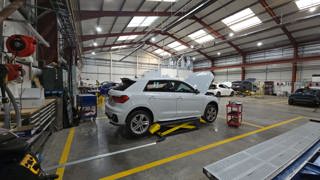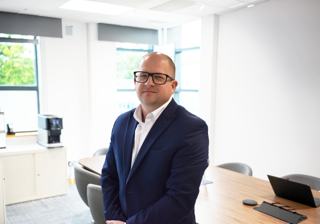Significant investment in IT and a focus on reducing vehicle off-road time has helped FMG enjoy a successful period of winning new business and retaining customers.
It was this proactive approach which helped the incident management and prevention company, which provides services to fleets, leasing companies and insurance companies and brokers, become the first winner of the new fleet specialist services supplier of the year award.
The investment, in particular, will have significant benefits for FMG customers, says Mark Chessman, the company’s chief executive officer.
“We’ve got a very strong core processing system, but our investment in IT gives us, through the web, the ability to interface in smart and flexible ways with customers, insurers and suppliers,” he says.
“The immediate benefit is better access to management information about their fleets in a way they can configure, and that can either be directly for the fleet and the fleet manager, or a leasing company.”
Fleet News: How will the investment in IT help FMG in the future?
Mark Chessman: We are building flexibility that will enable us to adapt to what is going to be an increasingly changing environment. While you can’t say exactly what all those changes will be, we do know that they will be associated either with changes in ownership models, mobility, technology such as advanced driver assistance systems (ADAS) or autonomous vehicles. That will change the dynamic between users of vehicles – whether they are fleets or individual users – insurers and repairers of vehicles. This is because there will probably be a lower frequency of incidents, as the technology will stop those from happening, but more data will be produced and captured by the vehicles. This will help to manage the repair process and the overall number of incidents. At the moment, this data is coming from telematics systems which fleets have decided to install in their vehicles, as they have recognised that this technology has value in reducing the cost of incidents, improving driver behaviour and reducing fuel use. In the future all the equipment will end up being in the car anyway. Manufacturer-fitted telematics will be standard in a vehicle in the same way that satellite navigation became a standard feature in a fleet vehicle four or five years ago. What’s not completely clear is how that data will be used. Many fleets will want to multi-marque, so although the telematics units may come as standard they are going to be in different brands. The technology we’ve built will enable us to take data from different sources and aggregate it. We can then present it in a way that is easily digestible and engaging for drivers, but useful for a fleet manager.
FN: If ADAS reduces collisions, what impact will that have on your business?
MC: One of the things we talk to our customers about is that prevention is better than cure. Success for us is for all of our customers to have fewer accidents, but for us to do such a good job that we can grow our business and have more customers. As the propensity of accidents is going to reduce, that’s a challenge we need to embrace. We want to be at the forefront of safer driving, reducing the costs of accidents and enabling a better use of vehicles for fleets and, ultimately, for everybody because you then have a more efficient transport network. It is a big step to go to fully-autonomous vehicles, but it’s nowhere near as big a step to just make cars as safe as possible and still have a person driving it.
FN: How else can a more efficient transport network be created?
MC: About 20% of our business is related to recovery, where we support people such as Highways England and the police, so we are interested in the increasing use of smart motorways and traffic management. At the moment there is debate about how smart we make the motorways and whether you should have four-lane running or keep hard shoulders. Smart motorways seem to be one of the most effective ways to increase capacity. The other issue is traffic flow, and the main thing that stops flow is accidents. The Government has used benefit-in-kind (BIK) tax to incentivise lower CO2 cars, but I am wondering whether the diesel emissions issue will trigger a more holistic view of the types of vehicles it wants on the road. BIK is a really effective mechanism to influence vehicle choice, and if it balanced emissions with safety, I think it could have a big impact on the economy. If the Government incentivises vehicles to have ADAS that prevent you from having an accident, combined with the increased capacity of motorways, you should reduce congestion. We are keen to see what the Government approach to vehicles will be: what kind of vehicles do they want to see on the road?
FN: How can your system help reduce vehicle off-road (VOR) time?
MC: Our system gives us a clear view of what is happening in the repair process, so if there is a parts delay we can pick that up at the earliest opportunity and, if necessary, look for a different parts solution or repair methodology. For example, for certain repairs such as a wing mirror where the vehicle doesn’t necessarily need to go into a bodyshop, we can put solutions in place where the vehicle can be taken to a repair venue and have a new mirror put on, which means there isn’t the typical amount of VOR time that there would have been. VOR time is also a changing dynamic because as vehicle technology increases, the propensity of the vehicle to have an accident decreases, but the complexity of a repair if there has been an accident has increased. You can’t just say that the VOR time for this repair will be this long because that’s what it was five years ago. Previously, if a bumper was damaged it may just have been a repair or replacement, but now it may feature a load of sensors in it which need to be recalibrated. Part of the work we’ve done enables us to provide driver updates directly from repair workshops, so the driver will get an update on the stage of the process their vehicle is in and know when it is going to come back. It makes them feel in touch with the process.
Chessman also believes it is important for the incident management industry to support a sustainable repair network.
“After 2008/09, there was a lot of pressure on the network and a lot of repairers either consolidated or their business didn’t survive,” he says.
“There was also a long period where there was pressure on prices in the repair network but, at the same time, the network was expected to invest in the equipment needed to repair more complex vehicles.
“We are committed to work with the repair network to make sure the margins are sustainable and share with our customers the challenges that the network faces – certainly the investment they have to make and the recruitment challenges they face in terms of making sure they have skilled technicians.”





















Login to comment
Comments
No comments have been made yet.